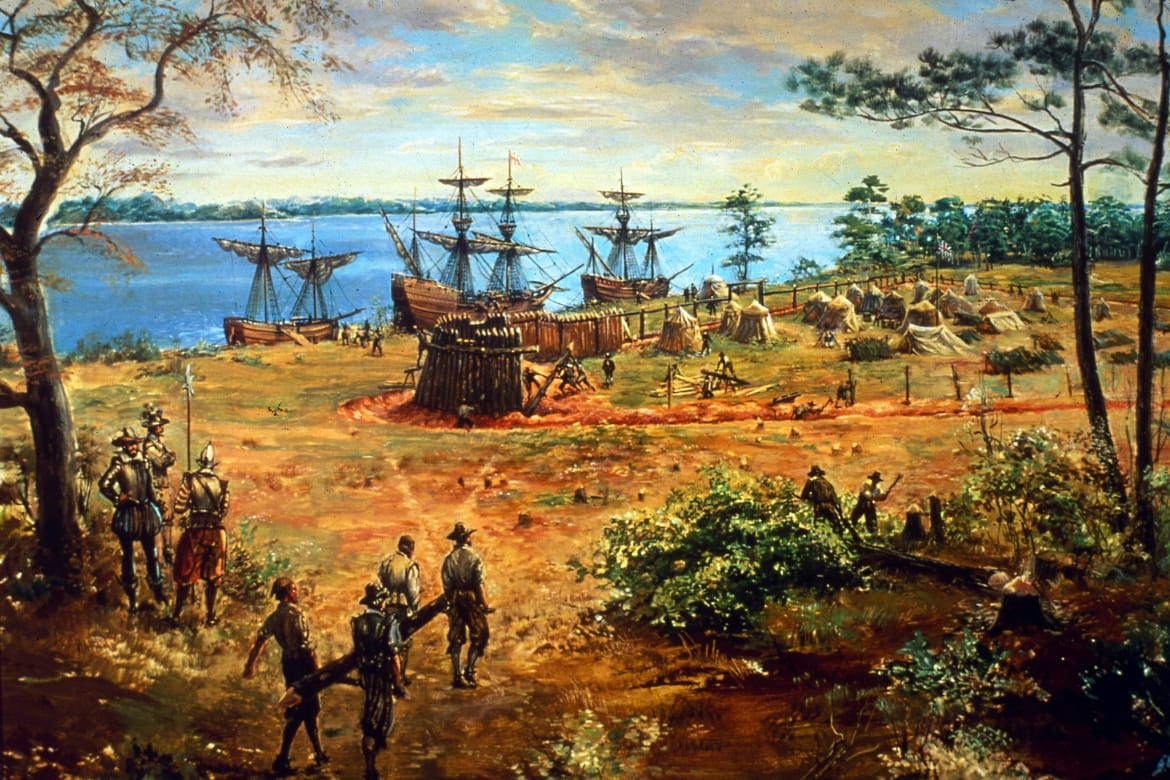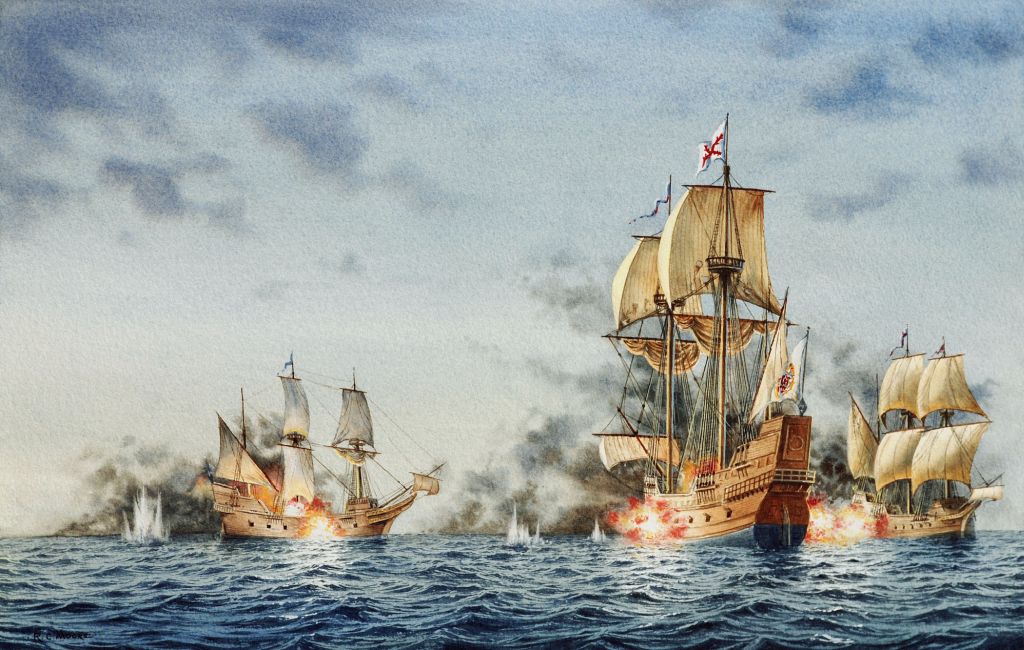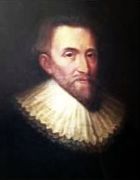Authors:
Historic Era: Era 1: Three Worlds Meet (Beginnings to 1620)
Historic Theme:
Subject:
Winter 2019 | Volume 64, Issue 1


Authors:
Historic Era: Era 1: Three Worlds Meet (Beginnings to 1620)
Historic Theme:
Subject:
Winter 2019 | Volume 64, Issue 1
Historian James Horn, a frequent contributor to American Heritage, is president of the Jamestown Rediscovery Foundation. Portions of this essay appeared in his recent book, 1619: Jamestown and the Forging of American Democracy (Basic Books).

Along the banks of the James River, Virginia, during an oppressively hot spell in the middle of summer 1619, two events occurred within a few weeks of each other that would profoundly shape the course of history. Convened with little fanfare or formality, the first gathering of a representative governing body anywhere in the Americas, the General Assembly, met from July 30 to August 4 in the choir of the newly built church at Jamestown. Following instructions from the Virginia Company of London, the colony’s financial backers, the meeting’s principal purpose was to introduce “just Laws for the happy guiding and governing of the people.” The assembly sat as a single body and was made up of the governor, Sir George Yeardley, his four councilors, and twenty-two burgesses chosen by the free, white, male inhabitants of every town, corporation, and large plantation throughout the colony.
A few weeks later, a battered English privateer, the White Lion, entered the Chesapeake Bay and anchored off Point Comfort, a small but thriving maritime community at the mouth of the James River that was often a first port of call for oceangoing ships. While roving in the Caribbean, the ship, together with its companion, the Treasurer, had been involved in a fierce battle with a Portuguese slaver bound for Veracruz. Victorious, the two privateers pillaged the Portuguese vessel and sailed away northward carrying dozens of enslaved Africans.

Running short of water and provisions, they headed for the nearest English haven, Virginia, where a couple of weeks later the prominent planter John Rolfe reported that the White Lion had “brought not anything but 20 and odd Negroes,” who were “bought” (my italics) for food supplies. The Treasurer entered the James River a few days later but opted to leave quickly, possibly after clandestinely selling some of the African captives on board. Forcibly transported from West Central Africa (modern-day Angola), they were the first Africans to arrive in mainland English America.
No one in Virginia in 1619 or in the years following could have possibly grasped the importance of what had occurred. Settlers understood that the assembly allowed them to have a hand in governing themselves, but they were motivated more by opportunities to approve laws sent by the Virginia Company from London and to propose their own legislation rather than by abstract concepts of self-government or subjects’ rights and liberties.
Equally, no documented discussion took place in the colony about the morality of owning and enslaving Africans. Deliberations in future general assemblies at Jamestown, as mirrored later in colonial legislatures across English America, focused far more on policing measures against Africans and protecting the rights of masters than on the rights of the enslaved or ethical considerations. Slavery, African and Indian, together with a broad spectrum of white non-freedom—apprenticeships, convict labor, and serfdom—were simply taken for granted in the emerging Atlantic world of the time and elicited little comment.
Yet the coincidence of the meeting of the first representative government and arrival of the first enslaved Africans in the summer of 1619 was portentous. Historians have argued that the rise of liberty and equality in America, America's democratic experiment, was shadowed from its beginning by its dark obverse: slavery and racism. Slavery in the midst of freedom, Edmund Morgan writes, was the central paradox of the birth of America. The rapid expansion of opportunities for Europeans was made possible only by the enslavement and exploitation of African and Indian peoples. Non-Europeans were consigned to a permanent underclass excluded from the benefits of white society, while Europeans profited enormously from the fruits of the labors of those they oppressed.
See also “Why Jamestown Matters” by James Horn
Arguably, then, 1619 marks the inception of the most important political development in American history, the rise of democracy, and the emergence of what would in time become one of the nation's greatest challenges: the corrosive legacy of racial stereotypes that continues to afflict our society today.
Despite the significance of 1619 and surrounding years, this period is almost entirely unknown to the public. Insofar as any attention has been given to early Virginia, the dominant narrative portrays Jamestown as an unqualified disaster, little more than a “dismal and fraught” precursor of the successful godly settlements in New England where, so it goes, America’s story really begins. For the nation at large, Plymouth in 1620 or the founding of the Puritan colony of Massachusetts a decade later exerts a far greater influence on our collective historical memory than the founding of Virginia in 1607 or the events of 1619.

This is